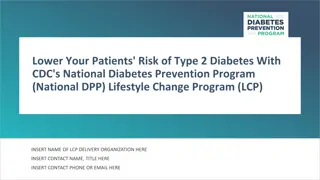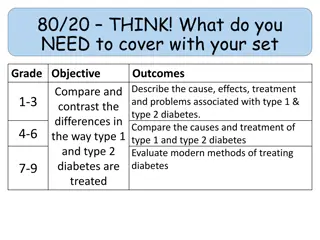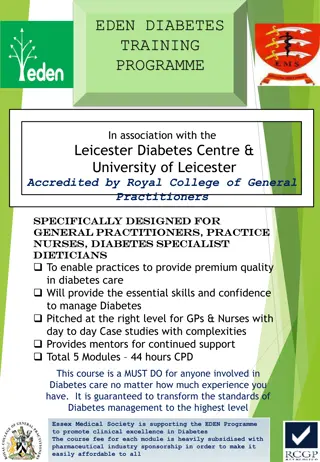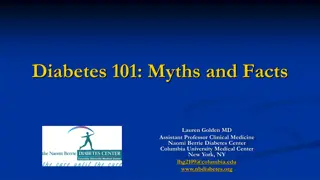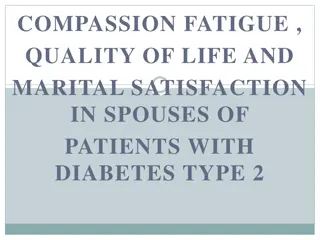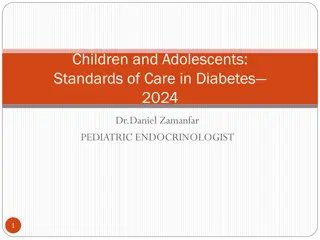Factors Leading to Type 2 Diabetes Rise
The factors contributing to the rise of type 2 diabetes is crucial for prevention and control. Obesity, lack of physical activity, and poor eating habits are significant risk factors. Learn how to prevent and manage type 2 diabetes, including lifestyle changes and regular monitoring. Discover the risks associated with poorly controlled diabetes and the alarming statistics highlighting the increasing prevalence of this chronic condition in the population.
Download Presentation

Please find below an Image/Link to download the presentation.
The content on the website is provided AS IS for your information and personal use only. It may not be sold, licensed, or shared on other websites without obtaining consent from the author.If you encounter any issues during the download, it is possible that the publisher has removed the file from their server.
You are allowed to download the files provided on this website for personal or commercial use, subject to the condition that they are used lawfully. All files are the property of their respective owners.
The content on the website is provided AS IS for your information and personal use only. It may not be sold, licensed, or shared on other websites without obtaining consent from the author.
E N D
Presentation Transcript
Diabetes on the Rise ST. LUKE S MINERS CAMPUS CLINICAL DIETITIAN& PSU DIETETIC STUDENT INTERN JENNIFER TOTH MA, RDN, LDN, CDE MACKENZIE HEISLER
Factors that Contribute to the Rise of Type 2 Diabetes: Obesity Decrease in consumption of fruits and vegetables Excessive overeating leading to weight gain Little to no physical activity Increase of alcohol consumption Hypertension (high blood pressure)
How to Prevent Type 2 Diabetes: Talk with physician about diet and exercise Add a routine exercise regimen and healthy diet into your life after talking with physician Make appointment or ask the physician if they can make a referral with a Registered Dietitian to gain a better understanding of: 1. carb counting and food measurements 2. how many calories you should be obtaining daily 3. how much exercise is enough for the energy rich diet the Dietitian recommends 4. talk about blood glucose monitoring and hemoglobin A1C level
How to Control Type 2 Diabetes if Already Diagnosed: Help control sugars and weight gain with diet and exercise Check blood sugar levels daily and document Monitor your blood glucose levels by attaining a hemoglobin A1C test completed every 2-4 times a year 7% and lower is the target for a healthy A1C level of a diagnosed diabetic Have testing completed for kidney, liver, cholesterol, and thyroid functions Routine foot and eye exams Insulin injections or diabetes medication to regulate
Risk Factors of Having Type 2 Diabetes If you poorly monitor or regulate blood glucose levels, one is in danger of increase risk for infections because healing becomes harder to do. Foot damage Diabetic gastroparesis Damage to the eyes and hearing Damage to kidney (nephropathy) Damage to nerves (neuropathy) from excess sugar Blood vessel and heart disease Skin conditions
How Much of a Rise? In 2015, 30.3 million Americans, or 9.4% of the population had diabetes. Of the 30.3 million adults with diabetes, 23.1 million were diagnosed and 7.2 million were undiagnosed. 1.5 million Americans are diagnosed with diabetes every year. In 2015, 84.1 million Americans age 18 and older had prediabetes. Prediabetes is a condition in which blood glucose levels are higher than normal but are not high enough for a diagnosis of diabetes. Source: http://www.diabetes.org/diabetes-basics/statistics/



